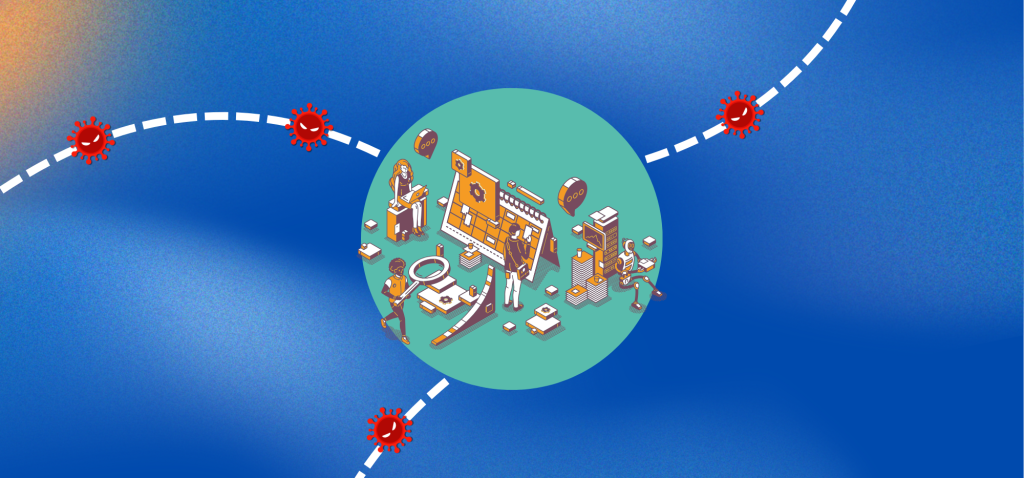
Remote and hybrid working has quickly become the norm for many businesses, mainly following the shift triggered by the pandemic.
What was once an interim response to global disruption is now a long-term strategy that has become popular because it offers flexibility, wider talent pools, a better work-life balance, and higher employee satisfaction. Many businesses have embraced this new work environment, empowering remote workers to stay connected and productive from anywhere, whether on work computers or personal devices.
However, with this freedom comes responsibility. Cybersecurity risks grow as work moves beyond the traditional office environment. From unsecured home networks to lost devices and weak access controls, remote work introduces new vulnerabilities that businesses of all sizes can’t neglect, especially if network security isn’t prioritised adequately.
This blog explores the most common security risks surrounding remote and hybrid working and how to protect your business against them.
Why security matters more than ever
Cybercrime is rising, and there are no signs of attacks slowing down.
As businesses continue migrating from physical to digital, they become increasingly targeted. According to the UK Government’s 2024 Cyber Security Breaches Survey:
- 50% of medium-sized businesses experienced an attack
- 32% of charities experienced some form of breach or attack
- Medium businesses, large businesses, and high-income charities with £500,000 or more annual income are far more likely to be targeted.
In addition, according to a recent report, 86% of business leaders believe that global geopolitical instability may result in a devastating cyber incident over the next two years. This statistic further emphasises the need for companies to implement appropriate security measures to combat current and emerging cyber threats across workforces with diverse work security needs.
With staff logging in from different locations, devices, and networks, remote and hybrid work creates more entry points for attackers. Without proper endpoint security, secure access protocols, and clear procedures for sensitive information handling, your business becomes vulnerable to phishing scams, ransomware attacks, data breaches, unsecured connections, weak password practices, and more.
The main security risks for remote and hybrid workers
Several key risks and vulnerability points exist in remote and hybrid setups, one of the most prominent being unsecured home networks.
Many employees rely on personal Wi-Fi routers that lack business-grade security. Often, default settings remain unchanged, making them easy targets for cybercriminals looking to intercept sensitive data or gain access to internal systems.
Another significant risk is the lack of endpoint protection. Without properly managed antivirus software, firewalls, or real-time threat detection measures on applicable devices, malware can spread quickly. Just one compromised device can threaten an entire business network.
Lost or stolen devices pose a real threat, too. Employees often work between homes, cafes, and coworking spaces, and while travelling, the chances of misplacing a laptop or mobile phone increase tenfold. If these devices aren’t encrypted or secured correctly, sensitive data—including customer details, internal files, and phone services—could easily fall into the wrong hands.
Access control issues are also common. If you don’t review and update your user permissions regularly, former employees or unauthorised users may still be able to access your systems.
How to protect your remote and hybrid workforce
Businesses must take a proactive stance toward cybersecurity to reduce and manage the risks mentioned above. This stance must account for the flexibility of remote working while maintaining proper security standards.
- Secure devices and endpoints
Companies must ensure that every device used for work, whether personal or company-issued, is protected with up-to-date antivirus software, firewalls, and threat detection tools. By implementing measures like mobile device management (MDM) or endpoint detection response (EDR) solutions, you can monitor, manage, and secure endpoints across your workforce.
2. Enforce strong access controls
Adopting the principle of least privilege (PoLP) to restrict access to sensitive data and systems equips businesses with additional security. Users should only have access to the resources they require for their role – regularly auditing permissions and revoking access for those no longer employed will help bolster security.
3. Use MFA (multi-factor authentication)
MFA adds additional layers of security by requiring users to confirm their identity in multiple ways before gaining access to company machines and resources. While this step may seem simple, it does wonders for security and reduces unauthorised access risk.
4. Encrypt sensitive data
Whether stored or in transit, sensitive data must always be encrypted from end to end. If a device is lost or intercepted, the information will remain unreadable to unauthorised users.
5. Implement VPNs and secure network practices
You should encourage or require employees to use a Virtual Private Network (VPN) when remotely accessing company systems. VPNs encrypt internet traffic and shield connections from potential eavesdroppers, particularly on unsecured networks like public Wi-Fi.
6. Provide cybersecurity training
Human error is among the most significant cybersecurity threats. By equipping your team with regular training on identifying phishing attempts, managing passwords, and following secure data-handling practices, you enable them to reinforce their learning and recognise vital signs.
7. Create and use a clear remote working policy
To mandate remote and hybrid working, you should establish and communicate a cybersecurity policy to your staff. This policy should clearly outline best practices, expectations, and protocols for handling potential incidents, so employees know how to respond if something goes wrong.
How can I implement these measures?
Implementing effective cybersecurity measures across a remote or hybrid workplace takes more than just ticking boxes. It requires strategic planning, the right tools, and expert-level guidance.
You should start by evaluating your existing IT infrastructure and identifying gaps in your security. What devices do your employees use? How do they access your systems? Where is sensitive data stored and transmitted? From here, you can start evaluating which protections are in place and which areas need reinforcement.
At Stream, we do the heavy lifting for you. Choosing us to deliver your cybersecurity strategy guarantees seamless implementation, tailored support, and solutions that suit your business’s size and scale. Whether you’re a start-up, medium-sized, or enterprise business with multiple remote teams, we can address your specific needs to identify the proper protection for your business.
Contact us below and view our Cybersecurity solutions suite here to learn more.

